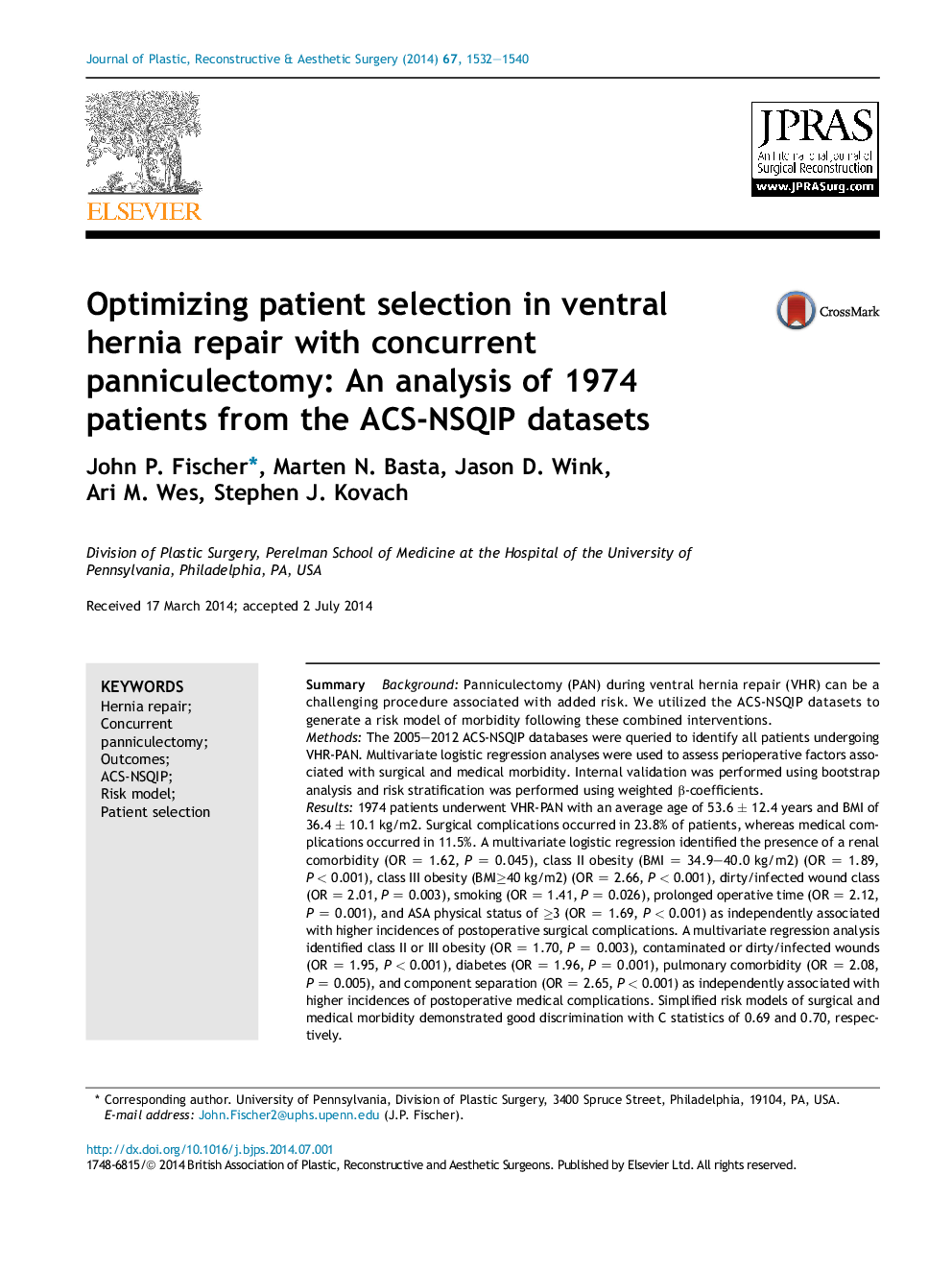| کد مقاله | کد نشریه | سال انتشار | مقاله انگلیسی | نسخه تمام متن |
|---|---|---|---|---|
| 4118535 | 1270334 | 2014 | 9 صفحه PDF | دانلود رایگان |

SummaryBackgroundPanniculectomy (PAN) during ventral hernia repair (VHR) can be a challenging procedure associated with added risk. We utilized the ACS-NSQIP datasets to generate a risk model of morbidity following these combined interventions.MethodsThe 2005–2012 ACS-NSQIP databases were queried to identify all patients undergoing VHR-PAN. Multivariate logistic regression analyses were used to assess perioperative factors associated with surgical and medical morbidity. Internal validation was performed using bootstrap analysis and risk stratification was performed using weighted β-coefficients.Results1974 patients underwent VHR-PAN with an average age of 53.6 ± 12.4 years and BMI of 36.4 ± 10.1 kg/m2. Surgical complications occurred in 23.8% of patients, whereas medical complications occurred in 11.5%. A multivariate logistic regression identified the presence of a renal comorbidity (OR = 1.62, P = 0.045), class II obesity (BMI = 34.9–40.0 kg/m2) (OR = 1.89, P < 0.001), class III obesity (BMI≥40 kg/m2) (OR = 2.66, P < 0.001), dirty/infected wound class (OR = 2.01, P = 0.003), smoking (OR = 1.41, P = 0.026), prolonged operative time (OR = 2.12, P = 0.001), and ASA physical status of ≥3 (OR = 1.69, P < 0.001) as independently associated with higher incidences of postoperative surgical complications. A multivariate regression analysis identified class II or III obesity (OR = 1.70, P = 0.003), contaminated or dirty/infected wounds (OR = 1.95, P < 0.001), diabetes (OR = 1.96, P = 0.001), pulmonary comorbidity (OR = 2.08, P = 0.005), and component separation (OR = 2.65, P < 0.001) as independently associated with higher incidences of postoperative medical complications. Simplified risk models of surgical and medical morbidity demonstrated good discrimination with C statistics of 0.69 and 0.70, respectively.ConclusionsWe report a simple preoperative, internally-validated risk model of surgical and medical morbidity following VHR-PAN to guide patient selection.Level of evidencePrognostic/risk category, level II.
Journal: Journal of Plastic, Reconstructive & Aesthetic Surgery - Volume 67, Issue 11, November 2014, Pages 1532–1540